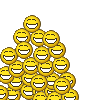Many of us have seen the blade sharpness testing over at Refined Shave. My first observation is that I really appreciate the effort this gent has put into his attempt to objectively measure the sharpness of blades, since there is really no comparable data set out there that I know of. And god knows we won’t ever get this type of technical information from the manufacturers, if that is even possible.
But when I compare my (admittedly subjective) experience with the measured data at RS, I have to wonder if the basic metric he is using for sharpness accurately translates into shaving sharpness. While it is true that “numbers don’t lie”, they only inform about whatever characteristic is being measured. If the numbers are a measurement of something that doesn’t correlate directly to performance, then they don’t really tell us anything we can use.
I’m not an engineer or materials scientist, so I can’t make an informed assessment of the methodology used to make the measurements. From what I understand there is no accepted standard for “sharpness”. The test used by RS is basically a function test, i.e. how much force is required to cut something. I’m hoping some of our more learned members can weigh in on the validity of this as a measuring method.
One observation I would make regarding the RS methodology: it appears that the sharpness measurements are made and recorded first, and then the subjective “shave test” ratings are observed and recorded. Interestingly, the subjective shave test ratings appear to be 100% congruent with the measured data, i.e. the blades that initially measure sharper, from what I can see, always rate better in the subjective observations than the less sharp blades. That seems like a red flag to me. I’m not implying that the subjective ratings are intentionally cooked, but perhaps this is a case of confirmation bias?
But when I compare my (admittedly subjective) experience with the measured data at RS, I have to wonder if the basic metric he is using for sharpness accurately translates into shaving sharpness. While it is true that “numbers don’t lie”, they only inform about whatever characteristic is being measured. If the numbers are a measurement of something that doesn’t correlate directly to performance, then they don’t really tell us anything we can use.
I’m not an engineer or materials scientist, so I can’t make an informed assessment of the methodology used to make the measurements. From what I understand there is no accepted standard for “sharpness”. The test used by RS is basically a function test, i.e. how much force is required to cut something. I’m hoping some of our more learned members can weigh in on the validity of this as a measuring method.
One observation I would make regarding the RS methodology: it appears that the sharpness measurements are made and recorded first, and then the subjective “shave test” ratings are observed and recorded. Interestingly, the subjective shave test ratings appear to be 100% congruent with the measured data, i.e. the blades that initially measure sharper, from what I can see, always rate better in the subjective observations than the less sharp blades. That seems like a red flag to me. I’m not implying that the subjective ratings are intentionally cooked, but perhaps this is a case of confirmation bias?





